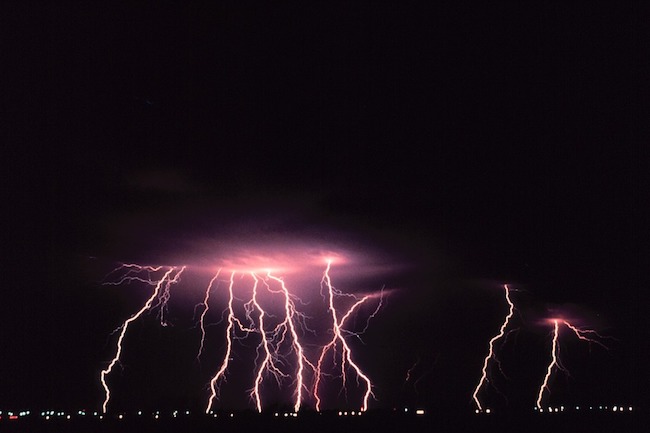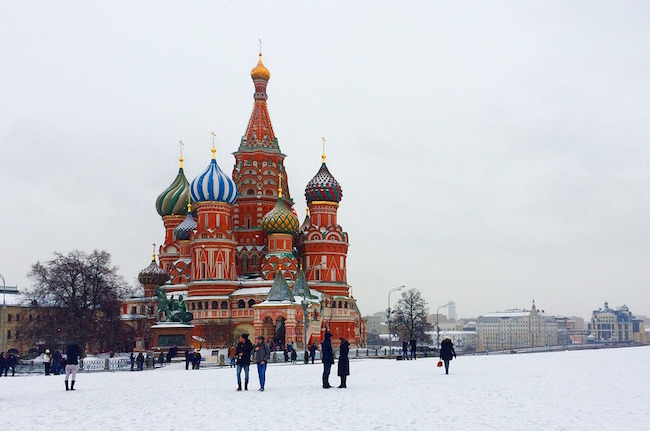In Search of Monsters to Destroy: The Manufacturing of a Cold War by Cynthia Chung for Strategic-Culture
This series will explain how the philosophy of the American establishment formed their “understanding” of nuclear strategy, which continues to influence thought today such as in the belief in the winnability of a limited nuclear war.
“She [the United States] has seen that probably for centuries to come, contests of inveterate power, and emerging right [will persist]…But she goes not abroad, in search of monsters to destroy…She well knows that by once enlisting under other banners than her own…she would involve herself beyond the power of extrication, in all the wars of interest and intrigue, of individual avarice, envy, and ambition, which assume the colors and usurp the standard of freedom. The fundamental maxims of her policy would insensibly change from liberty to force… She might become the dictatress of the world. She would be no longer the ruler of her own spirit…”
– speech in 1821 by John Quincy Adams, sixth President of the United States (1825-1829), and the first American Ambassador to Russia in 1809.
This three part series will discuss how American foreign policy and ideology came to be what Eisenhower would refer to in his farewell address on January 17th, 1961 as the “military-industrial complex” that held whether sought or unsought, the power to acquire unwarranted influence, and that such a “power exists, and will persist,” leaving the following generations of Americans “a legacy of ashes,” for a once great nation.
This series will explain how in particular, the philosophy of the American establishment, including that of the military, formed their “understanding” of nuclear strategy which continues to influence thought today such as in the belief in the winnability of a limited nuclear war. It will also explain the reasons for why the Vietnam war was fought with the approach used as well as the War on Terror, and most importantly why.
A Foreign Attack on American Soil
On December 7th, 1941, the United States naval base at Pearl Harbor, Hawaii was attacked by the Japanese navy, killing 2,403 Americans and wounding 1,178. However, the Americans would only begin their military air campaign against Japan by mid-1944.
General MacArthur estimated that a million Americans would die in only the first phase of the Pacific War. The Russians were being heavily courted by the Americans to break their Neutrality Pact with Japan and enter into the Pacific War for the very straightforward reason that fewer Americans would die.
After three years of the most savage warfare against the German Nazis, where over 25 million Russian soldiers and civilians died, Russia was now prepared to enter into another war with Japan, only months later, to offer military support to the U.S., a country that had suffered minute losses in comparison.
When Admiral King, chief of naval operations, was informed that the Russians would definitely enter the fight against Japan, he was immensely relieved commenting “We’ve just saved two million Americans.”
* * *
On April 12th, 1945 President Roosevelt passed away and much of the American-Russian partnership with him.
On July 16th, 1945, the first successful atomic bomb was tested in Alamogordo, New Mexico. Seven days later, Stalin was informed at the Potsdam conference by Truman that America now had the bomb.
Truman, contrary to what he was advised to do, made no mention of collaboration, no mention of making the world peaceful and safe, and no offer to share information with the Russians, not even in return for any quid pro quo. Simply that America now had the bomb.
On August 6th, 1945, Little Boy, the first atomic bomb was dropped on Hiroshima.
On August 9th at 1:00 am, one million Soviet troops crossed the border into eastern Manchuria to face the Kwantung, the culmination of ten months of coordinated planning. Later that same day a second atomic bomb, Fat Man (named after Churchill), was dropped on Nagasaki.
The Russians were completely taken aback. They had not been notified of this plan, and it was certainly not a “friendly” message that the U.S. was sending to their supposed allies.
On August 15th, six days later, Japan surrendered. Many historians have agreed that the Russian attack in Manchuria had the greater weight in causing the Japanese to surrender. (1) But it did not matter.
Most in the West would either never know or would soon forget about the Russian sacrifice.
The decision to drop the bomb, Truman would write in a letter to his daughter Margaret, was “no great decision…not any decision you would have to worry about.”
Nuclear physicist Yuli Khariton would voice a common Russian reaction when he wrote that the two bombs that were dropped on Japan were used “as atomic blackmail against the USSR, as a threat to unleash a new, even more terrible and devastating war,” if Russia refused to play by the rules decided for her.
By the end of WWII, the contrast between the United States and Soviet Union were enormous. The U.S. was supplying over half of the world’s manufacturing capacity, more than half of the world’s electricity, holding two-thirds of the world’s gold stocks and half of all the monetary reserves. It had suffered 405,000 casualties, 2.9 percent of its population (The size of the American population in 1945 was approximately 140 million).
Russia suffered 27 million casualties, 16 percent of its population. The Germans burned 70,000 Russian villages to the ground and destroyed 100,000 farms. Twenty-five million Russians were homeless. 32,000 factories and 65,000 railroad tracks were destroyed. And its major cities: Leningrad, Stalingrad and Moscow were in shambles.
The Godfather of RAND: Air Force General Curtis LeMay
“If we had lost the war, we’d all have been prosecuted as war criminals.”
– Air Force General Curtis LeMay in “The Fog of War”
On October 1st, 1945, less than two months after the dropping of two nuclear bombs on Japan, Commanding General Henry Arnold of the U.S. Army Air Forces, inspired by what the scientists under the Manhattan Project could do, met with Franklin R. Collbohm, Arthur E. Raymond, Donald Douglas, and Edward Bowles. This was the pioneering team that would create RAND.




